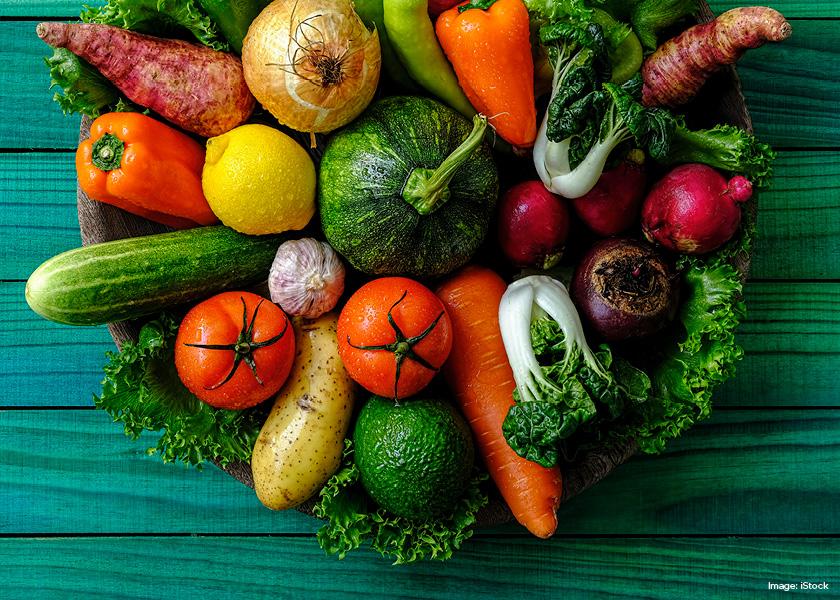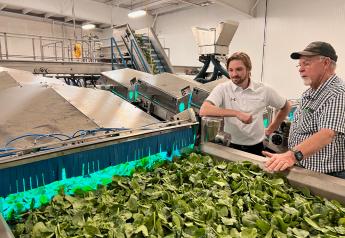Weather, pest issues push vegetable prices higher in 2022

Weather conditions and pest pressures in California, Florida and Mexico combined to create elevated vegetable fob prices in 2022, and a USDA report says higher prices may persist until at least early January.
“Shipping-point prices for fresh vegetables are expected to remain above seasonal norms until new or replanted fields are harvested in late December or early January,” the report said.
Shipping-point prices for fresh-market vegetables surged 33% over the first 10 months of 2022, which the report said was the largest year-over-year gain since 1995.
In Florida, the report said growers of tomatoes, bell peppers and squash were forced to replant fields following hurricanes Ian and Nicole.
“Hurricanes Ian and Nicole damaged infrastructure and flooded fields in Florida, damaging fall season crops such as tomatoes and peppers (which were at or close to maturity) reducing and delaying shipments,” the report said. “Farther south, rain and wind damage required many winter vegetable growers to replant, which could lead to delayed shipments (and possible price-depressing bunching of harvests) in early 2023.”
The USDA report said California growers suffered from the impacts from the long-term drought, above normal temperatures, an unusual late summer rainstorm, and heavy pest pressure. Those factors cut into marketable fall-season supplies of leafy and cruciferous vegetables, according to the report.
“Shipping-point prices for iceberg, leaf, and romaine lettuce soared this fall as marketable volume declined due to widespread disease damage in the Salinas Valley,” the report said. “Unseasonably warm weather this fall, and a combination of soil borne pathogens (such as Pythium Wilt) and thripvectored Impatiens Necrotic Spot Virus (INSV) reduced yields on farms that already had reduced planted acreage because of irrigation water shortages.”
The USDA said the October fob price for iceberg lettuce averaged a record $126 per cwt, up 150% from a month earlier and 132% above the three-year average.
Given the prevalence of contracting in vegetable production, limited available supply after contract fulfillment for crops such as California lettuce resulted in sustained price spikes in fob prices, the report said.
Mexico, a big producer of tomatoes, peppers, cucumbers and other vegetables, experienced hurricanes that hurt growers in western and north central production regions, the report said.
Potatoes and onions also have experienced elevated markets.
“The 2022 crop marks the first-time annual potato production declined 5 consecutive years in a row,” the report said. The gradual decline in production over the last few growing seasons occurred despite increased planted acres in 2019 and 2021.
According to USDA’s November Crop Production report, 2022 U.S. potato production is down 3% from last year due in part to decreased planted acres (down 2%) and adverse growing conditions.
During the September 2021 to August 2022 marketing year, the season-average price (includes fresh and processing potatoes) reached a nominal record high of $10.20 per cwt, marking the first time the season price exceeded $10 per cwt, the report said.
Retail prices for vegetables will show a substantial increase in 2022, the report said.
“Driven primarily by rising transport costs and higher prices for key items such as potatoes, onions, and lettuce, when complete this year, the CPI for fresh vegetables will likely present the largest year-to-year gain since an 11% surge in 1998,” the report said.
Per capita consumption of fresh vegetables is likely to dip in 2022, the USDA said.
“Given reduced domestic volume, higher prices, and sluggish imports, it is likely that per capita availability of fresh market vegetables will register a decline in 2022,” the report said. “Reduced availability is likely for fresh vegetables such as iceberg and romaine lettuce, broccoli, cauliflower, sweet corn, onions, and tomatoes.”







